Sean Bienvenidos , Arqueojaponólogos; Quiero Hacer Un Llamamiento: En Instagram Abundan Cuentas Así




Sean bienvenidos , arqueojaponólogos; quiero hacer un llamamiento: en Instagram abundan cuentas así como la de la foto que usan Wikipedia sin rigor cientifista y lo peor es que hay gente incrédula, o no sé cómo llamarlos para suavizarlo. Hay que ser crítico con lo que se lee en internet. Si de verdad quieren aprender sobre algo, hay que leer hasta un máximo de 10 fuentes, incluso más, y después contrastar la información que leemos. Las fotos son una cosa aparte, pero también hay que tener cuidado con el material que se usa; yo me tiro días en publicar el contenido que ven en esta cuenta. Además, las fotos son dos recursos muy buenos para detectar el plagio y lo siento mucho por esa cuenta y todas las cuentas que son similares; si las ven, denuncien o bloqueen, no son de fiar, son cuentas que desinforman, además de la poca originalidad. - Hay fuentes más confiables que Wikipedia, como Google Scholar y Academia.edu, por poner unos ejemplos. Si todos unimos fuerzas, podremos eliminar de internet este tipo de gente y su contenido que solo sabe desinformar . - Que pasen una buena semana y nos vemos en próximas publicaciones . ¡Feliz año 2025! - ようこそ、日本考古学者の皆さん。訴えたいのですが、インスタグラムには写真のようなアカウントが科学的厳密性なしにウィキペディアを利用しているアカウントがたくさんありますが、最悪なのは信じられない人がいるということです。あるいは、彼らを何と呼んで和らげたらいいのかわかりません。インターネットで読むものには批判的でなければなりません。何かについて本当に知りたい場合は、最大 10 個の情報源、さらにそれ以上の情報源を読み、読んだ情報を比較する必要があります。写真は別のものですが、使用される素材にも注意する必要があります。私はこのアカウントでご覧いただくコンテンツを何日もかけて公開しています。また、写真は盗作を検出するための非常に優れたリソースであり、そのアカウントと同様のすべてのアカウントについて非常に申し訳ありません。それらを見かけたり、報告したり、ブロックしたりした場合、それらは信頼できず、オリジナリティの欠如に加えて、誤った情報を提供するアカウントです。 - いくつかの例を挙げると、Google Scholar や Academia.edu など、Wikipedia よりも信頼できる情報源があります。私たち全員が力を合わせれば、誤った情報を伝えることしか知らないこの種の人々とそのコンテンツをインターネットから排除することができます。 - 良い一週間をお過ごしください。また今後の投稿でお会いしましょう。 2025 年明けましておめでとうございます! - Welcome, archaeojapanologists; I want to make an appeal: on Instagram there are plenty of accounts like the one in the photo that use Wikipedia without scientific rigor and the worst thing is that there are people who are incredulous, or I don't know what to call them to soften it. You have to be critical of what you read on the Internet. If you really want to learn about something, you have to read up to a maximum of 10 sources, even more, and then compare the information you read. Photos are a separate thing, but you also have to be careful with the material you use; I spend days publishing the content you see on this account. Also, photos are two very good resources to detect plagiarism and I am very sorry for that account and all the accounts that are similar; if you see them, report or block them, they are not trustworthy, they are accounts that misinform, in addition to the lack of originality. - There are more reliable sources than Wikipedia, such as Google Scholar and Academia.edu, to give a few examples. If we all join forces, we can eliminate these types of people and their content that only knows how to spread misinformation from the Internet. - Have a good week and see you in future posts. Happy New Year 2025!
More Posts from Noticiasarquelogicasjaponesas and Others





En esta publicación hablaremos sobre el Túmulo funerario de Hirata Umeyama, localizado en el pueblo de Asuka, distrito de Takaichi, prefectura de Nara, mide 140 m y se cree que fue construido a finales del período Kofun VI d.c, fue la tumba de un gran rey durante el período final de la soberanía de Yamato. - Está administrado por la Agencia de la Casa Imperial, que estableció un lugar de culto en el mausoleo Hinokuma-zakaago del emperador Kinmei, cabe destacar que el 90% de los kofun son sagrados. El túmulo funerario de Maruyama localizado en la ciudad de Kashihara, es el túmulo funerario más grande de la prefectura de Nara y el 6º en Japón y tiene una longitud de 318 m, se trata de la tumba del emperador Kinmei. - Cabe destacar que hasta que no se realicen estudios es difícil saberlo, pero como he dicho antes, al ser sitios sacros los estudios son dificultosos. "Konjaku Monogatari Shu" (Colección de cuentos de tiempos pasados), que se completó al final del período Heian, contiene una anotación que sugiere que el túmulo Hirata Umeyama fue la tumba del emperador Kinmei, por lo que ya se pensaba ser la tumba del emperador Kinmei en la Edad Media” - Durante el período Edo, el montículo y sus alrededores se vieron modificados en gran medida, en lo que respecta a su posición original, el túmulo de Hirata Umeyama tiene unas características del período Asuka. Debido a su relación con el túmulo funerario de Maruyama localizado en la ciudad de Kashihara, está a tan solo a unos 700 m de distancia. - Espero que os haya gustado y nos vemos en próximas publicaciones. - In this publication we will talk about the Hirata Umeyama Burial Mound, located in the town of Asuka, Takaichi district, Nara prefecture, it measures 140 m and is believed to have been built at the end of the Kofun VI period AD, it was the tomb of a great king during the final period of Yamato's sovereignty. - It is administered by the Imperial Household Agency, which established a place of worship in the Hinokuma-zakaago mausoleum of Emperor Kinmei, it should be noted that 90% of the kofun are sacred. The Maruyama Burial Mound, located in the city of Kashihara, is the largest burial mound in Nara Prefecture and the 6th in Japan and has a length of 318 m. It is the tomb of Emperor Kinmei. - It should be noted that until studies are carried out it is difficult to know, but as I said before, since they are sacred sites, studies are difficult. "Konjaku Monogatari Shu" (Collection of Tales of Bygone Times), which was completed at the end of the Heian period, contains an annotation suggesting that the Hirata Umeyama mound was the tomb of Emperor Kinmei, so it was already thought to be the tomb of the Emperor Kinmei in the Middle Ages - During the Edo period, the mound and its surroundings were greatly modified. Regarding its original position, the Hirata Umeyama mound has characteristics of the Asuka period. Due to its relationship with the Maruyama burial mound located in the city of Kashihara, it is only about 700 m away. - I hope you liked it and see you in future posts. - 今回は、奈良県高市郡明日香町にある平田梅山古墳について紹介します。古墳第六期末期に築造されたと考えられている全長140メートルの古墳です。ヤマト王権末期の大王の墓。 - 欽明天皇の檜隈坂合御陵に拝所を設置した宮内庁が管理しており、古墳の9割が神聖であることに注目すべきである。 橿原市にある丸山古墳は、全長318mで奈良県最大、全国6番目の古墳です。 - なお、研究してみないとわかりませんが、先ほども言いましたが、聖地であるため研究は困難です。 平安時代末期に成立した『今昔物語集』には、平田梅山古墳を欽明天皇陵とする注記があり、すでに欽明天皇陵であると考えられていた。中世の欽明天皇の - 平田梅山古墳は、江戸時代に墳丘とその周囲が大きく改変されましたが、その原位置は飛鳥時代の特徴を持っています。橿原市にある丸山古墳との関係で700mほどしか離れていない。 - 気に入っていただければ幸いです。今後の投稿でお会いしましょう

Sean bienvenidos a un nuevo apartado de la cuenta jainistasarqueólogos, para estrenarlo vamos a hacer un reel a modo debate si os parece bien dicho esto pongan cómodos que empezamos. - ¿Por qué hay esvásticas o cruces gamadas en Japón, india, etc.? Me gustaría aclarar que esta publicación no busca incitar la motivación u odio hacia dicho símbolo, voy a explicaros un poco el verdadero del símbolo y de cómo fue utilizado para el mal. La cruz gamada se usa en muchas culturas del mundo desde el neolítico para adorar al sol, además significa buena fortuna o bienestar, es muy usada por el hinduismo, los antiguos griegos, etruscos y de cómo un simple símbolo dependiendo de cómo se enfoque puede cambiar bruscamente de bueno a malo o a la inversa. - ¿Qué opinan ustedes? Leo gustosamente los comentarios, por favor es un debate, se intenta no buscar idolatrías, yo me mantengo neutro. - Espero que os guste y nos vemos en próximas publicaciones, que pasen una buena semana. - Welcome to a new section of the Jainistasarqueólogos account, to release it we are going to do a reel in debate mode if you think this is well said, make us comfortable that we start. - Why are there swastikas or swastikas in Japan, India, etc.? I would like to clarify that this publication does not seek to incite motivation or hatred towards said symbol, I am going to explain a little about the true symbol and how it was used for evil. The swastika is used in many cultures of the world since the Neolithic to worship the sun, it also means good fortune or well-being, it is widely used by Hinduism, the ancient Greeks, Etruscans and how a simple symbol depending on how it is focused can change abruptly from good to bad or vice versa. - What do you think? I read the comments with pleasure, please, it's a debate, we try not to look for idolatry, I remain neutral. - I hope you like it and see you in future publications, have a good week. - アカウントの新しいセクションへようこそ、それを開くために、我々はあなたがそれが良いと思う場合は、議論としてリールを作るつもりですので、自分自身を快適にし、始めましょう。 - なぜ日本やインドなどに鉤十字や卍があるのでしょうか?この投稿は、シンボルに対する動機や憎悪を煽るためのものではないことを明確にしておきたい。実際のシンボルと、それがどのように悪のために使われたのかについて少し説明しよう。卍は新石器時代から世界中の多くの文化で太陽を崇拝するために使われており、幸運や幸福を意味するものでもある。ヒンドゥー教、古代ギリシャ、エトルリアなどで広く使われており、単純なシンボルがアプローチの仕方によって、善から悪へ、あるいはその逆へと突然変化するものなのだ。 - どう思いますか?私は中立を保ちますので、偶像崇拝を探さないでください。 - それではまた、良い1週間を。




Sean bienvenidos japonistaarqueológicos a una nueva actualidad del país del sol naciente, esto será algo nuevo que voy a comenzar espero que os guste, dicho esto pónganse cómodos que empezamos. - El portavoz del gobierno de Japón, Matsuno Hirokazu:” dijo el lunes que el país continuará tomando medidas integrales para monitorear sus aguas territoriales cerca de las Islas Senkaku en el Mar de China Oriental”. - Debido a que dos barcos chinos habían estado 72 horas y 45 minutos en aguas territoriales japonesas frente a la prefectura de Okinawa, dichas islas son reclamadas por China y Taiwán, el gobierno japonés sostiene que las islas son una parte inherente del territorio de Japón, en términos de historia y derecho internacional. - Conclusión: Por lo que podemos observar, China quiere los territorios más que por temas históricos los quiere porque quien controle Taiwan controla el mundo, además la antigua Formosa es aliada de japón y de estados unidos a mi me huele a propaganda china. - Espero que os guste y nos vemos en próximas publicaciones de historia, arqueología, cultura nipona, ¿Qué opinan ustedes? abro la mesa debate. - 日出ずる国から新しいニュースへようこそ。これから新しいことを始めますが、気に入っていただければ幸いです。 - 日本政府の松野博一報道官: "は月曜日、東シナ海の尖閣諸島付近の領海を監視するために包括的な措置を取り続けることを明らかにした。" - 中国船2隻が沖縄県沖の日本領海で72時間45分も過ごしていたため、中国と台湾が領有権を主張している同諸島を、日本政府は歴史的にも国際法上も日本固有の領土と主張しています。 - 結論:私たちが見る限り、中国は歴史的な理由よりも、台湾を支配するものが世界を支配しているから領土が欲しいのであって、旧フォルモサは日本やアメリカの同盟国であり、私には中国のプロパガンダの臭いがする。 - 歴史、考古学、日本文化の次の出版物でお会いしましょう、どうでしょうか? 私は討論のテーブルを開く - Welcome to a new news from the land of the rising sun, this will be something new that I am going to start, I hope you like it, that said make yourselves comfortable and let's get started. - Japan's government spokesman Matsuno Hirokazu:" said on Monday that the country will continue to take comprehensive measures to monitor its territorial waters near the Senkaku Islands in the East China Sea." - Because two Chinese ships had spent 72 hours and 45 minutes in Japanese territorial waters off Okinawa prefecture, the islands are claimed by China and Taiwan, the Japanese government maintains that the islands are an inherent part of Japan's territory, in terms of history and international law. - Conclusion: As far as we can see, China wants the territories more than for historical reasons, it wants them because whoever controls Taiwan controls the world, and the former Formosa is an ally of Japan and the United States, which smells like Chinese propaganda to me. - I hope you like it and I will see you in the next publications of history, archaeology, Japanese culture, what do you think? I open the debate table.

Sean bienvenidos, japonistasarqueológicos a una nueva entrega, en esta ocasión haré una introducción a que es la arqueología asistida a la arquitectura, una vez dicho esto pónganse cómodos que empezamos. - La arqueología, abarca muchos campos de estudios y épocas, desde la prehistoria hasta nuestro día, pero no estudia dinosaurios, lo siento, de eso se encarga la paleontología. En este caso, ¿Qué entendemos por Arqueología aplicada a la arquitectura?: pues atravez de sus restos arqueológicos nos permiten saber como eran las distintas arquitecturas de las distintas épocas. Por ejemplo: la arquitectura greco-romana y de la era vikinga, pero en este caso nos trasladamos al país del sol naciente y para que lo puedan entender mejor pongamos algunos ejemplos como las pagodas o edificios budistas e incluso casas de tipo foso en el periodo Jomon, solo por mencionar algunas cosas. - Gracias a esta disciplina y si la combinamos con la Arqueología 3D, pues el resultado es que con recreaciones virtuales o con la arqueología experimental nos permiten entender como se llevaron a cabo la labor de construcción y de abandono, etc. - Espero que os guste y nos vemos en próximas publicaciones, que pasen una buena semana. - Welcome, Japanese archaeologists to a new installment, this time I will make an introduction to what assisted archeology is to architecture, once said this, make yourself comfortable and let's start. - Archeology covers many fields of study and times, from prehistory to the present day, but it does not study dinosaurs, sorry, paleontology takes care of that. In this case, what do we understand by Archeology applied to architecture? Well, through its archaeological remains they allow us to know what the different architectures of the different eras were like. For example: Greco-Roman architecture and the Viking era, but in this case we move to the country of the rising sun and so that they can understand it better, let's give some examples such as pagodas or Buddhist buildings and even moat-type houses in the period Jomon, just to mention a few things. - Thanks to this discipline and if we combine it with 3D Archaeology, the result is that with virtual recreations or with experimental archeology they allow us to understand how the construction and abandonment work was carried out, etc. - I hope you like it and see you in future publications, have a good week. - 日本の考古学者の皆さん、新しい記事へようこそ。今回は、建築に対する考古学支援とは何かについて紹介します。これを言ったら、安心して始めましょう。 - 考古学は先史時代から現代に至るまで、多くの研究分野と時代をカバーしますが、恐竜については研究しません。申し訳ありませんが、古生物学がそれを担当します。 この場合、考古学を建築に適用すると、私たちは何を理解できるのでしょうか? そうですね、考古学的遺跡を通じて、さまざまな時代のさまざまな建築がどのようなものであったかを知ることができます。 例: ギリシャ・ローマ建築とバイキング時代。この場合は日出ずる国に移ります。理解が深まるように、塔や仏教の建物、さらには堀型の家などの例を挙げましょう。縄文時代のことについて少しだけ触れておきます。 - この専門分野のおかげで、これを 3D 考古学と組み合わせると、仮想レクリエーションや実験考古学を使用して、建設や放棄作業がどのように行われたのかなどを理解できるようになります。 - 気に入っていただければ幸いです。今後の出版物でお会いできることを願っています。良い一週間をお過ごしください。


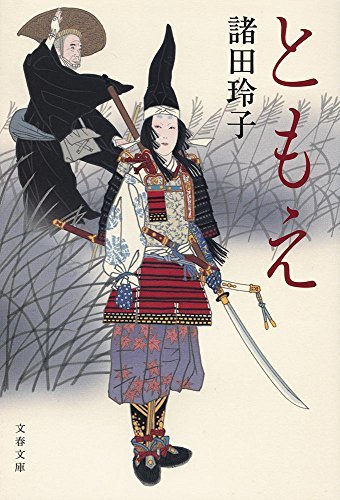



Sean bienvenidos, japonistasarqueológicos a una nueva entrega en esta ocasión hablaremos de Tomoe Gozen una vez dicho esto pónganse cómodos que empezamos. - Tomoe Gozen en hiragana (ともえごぜん) pertenece a Onna-bugeisha (女武芸者) mujeres luchadoras en japonés se conoce más como Ba Yuqian, al hablar de samurais se nos viene imágenes de hombres, las mujeres también tuvieron un gran papel y Tomoe Gozen fue una mujer que participó en el conflicto Genpei 1180-1192, su existencia está un tanto discutida. - Kiso Yoshinaka es muy hábil en las artes marciales y es bueno en el uso de arcos y flechas, os pondré una foto de la Estatua de Kiso Yoshinaka y Bagomae en la prefectura de Nagano. Fue una gran estratega, ya que cuenta la leyenda que en la Batalla del paso de Kuligara uso toros de fuego. - El Cantar de Heike: Son los poemas clásicos más importantes de la historia y la literatura japonesa, en el cual hablan de un sinfín de personajes y leyendas de la época. Fue escrito a principios del siglo XIII. - Espero que os haya gustado, os deseo una feliz semana y nos vemos en próximas publicaciones. 考古学ジャポニストの皆さん、新しい連載へようこそ。今回は巴御前についてお話します。そうは言っても、気を楽にしてから始めましょう。 - ひらがなで「ともえごぜん」は女武芸者に属し、日本語では巴玉銭として知られる女性戦士です。武士といえば男性のイメージが思い浮かびますが、女性も大きな役割を果たしました。 1180年から1192年にかけて源平合戦に参加した女性ですが、その存在については若干の議論があります。 - 木曽義仲は武芸に優れ、弓矢の扱いにも長けており、長野県にある木曽義仲像と馬籠前の写真を載せておきます。 クリガラ峠の戦いでは火の雄牛を使用したという伝説があるため、彼女は優れた戦略家でした。 - 平家の歌: 平家の歌は、日本の歴史と文学において最も重要な古典詩であり、その中で当時の無数の登場人物や伝説について語られています。 13世紀初頭に書かれました。 - 気に入っていただけたなら幸いです。楽しい一週間をお過ごしください。また今後の出版物でお会いしましょう。 Welcome, Archaeological Japonists to a new installment, this time we will talk about Tomoe Gozen, having said that, make yourself comfortable and let's start. - Tomoe Gozen in hiragana (ともえごぜん) belongs to Onna-bugeisha (女武芸者) female fighters in Japanese is better known as Ba Yuqian, when talking about samurai images of men come to mind, women also had a great role and Tomoe Gozen was a woman who participated in the Genpei conflict 1180-1192, her existence is somewhat disputed. - Kiso Yoshinaka is very skilled in martial arts and is good at using bows and arrows, I will put you a photo of Kiso Yoshinaka Statue and Bagomae in Nagano Prefecture. She was a great strategist, since she tells the legend that in the Battle of Kuligara Pass she used bulls of fire. - The Song of Heike: They are the most important classical poems in Japanese history and literature, in which they speak of an endless number of characters and legends of the time. It was written at the beginning of the 13th century. - I hope you liked it, I wish you a happy week and see you in future publications.







Sean bienvenidos japonesitasarqueológicos a una nueva entrega, en esta ocasión tenemos la colaboración de la cuenta @historia.belica.mundial, en la que hablaremos de la empresa más antigua del mundo ¿ Donde se localiza? dicho esto pónganse cómodos que empezamos. - Kongo Gumi tiene un grupo de artesanos llamado "Takumikai" formado por carpinteros de santuarios dedicados. El Kongo Gumi ha transmitido las técnicas que se han transmitido de discípulo a discípulo durante más de 1.400 años y para transmitirlas a la próxima generación. Son el principal grupo de carpinteros que hacen los templos y santuarios de todo Japón, utilizando técnicas tradicionales y avanzadas, como juntas y juntas de madera. - ¿Cuándo se estableció la empresa? Se estableció en el Séptimo año del trigésimo emperador Bidatsu del período Asuka 578 d. C fueron responsables de la construcción del Templo Shitennoji y el Templo Horyuji. Ahora el Templo Horyuji ha sido catalogado como Patrimonio de la Humanidad. En Japón, hay 7 "empresas del milenio" como King Konggumi, y hay más de 130,000 "empresas de longevidad" con más de 200 años, ocupando el primer lugar en el mundo. - Finalmente, en 2006, anunció su liquidación. Los activos fueron absorbidos por la empresa subsidiaria del mismo nombre "Kongo-gumi" establecida por Takamatsu Construction en noviembre de 2005, y Kongo-gumi volvió a su antiguo negocio, especializado en arquitectura de templos. Antes de la liquidación, los ingresos del año fiscal 2005 de King Kong Group fueron de 7.500 millones de yenes, con 100 empleados. - Espero que os haya gustado y nos vemos en próximas publicaciones de japón ¿Conocían esta empresa? - Welcome Japanese archaeologists to a new delivery, this time we have the collaboration of the account @historia.belica.mundial, in which we will talk about the oldest company in the world. - Kongo Gumi has a group of craftsmen called "Takumikai" made up of dedicated shrine carpenters. The Kongo Gumi has passed down the techniques that have been handed down from disciple to disciple for over 1,400 years and to pass them on to the next generation. They are the main group of carpenters who make temples and shrines all over Japan, using traditional and advanced techniques, such as wooden joints and joints. - When was the company established? Established in the 7th year of the 30th year of Emperor Bidatsu of the Asuka period 578 AD, they were responsible for the construction of Shitennoji Temple and Horyuji Temple. Now Horyuji Temple has been listed as a World Heritage Site. In Japan, there are 7 "millennium companies" such as King Konggumi, and there are more than 130,000 "longevity companies" with more than 200 years, ranking first in the world. - Finally, in 2006, it announced its liquidation. The assets were absorbed by the eponymous subsidiary company "Kongo-gumi" established by Takamatsu Construction in November 2005, and Kongo-gumi returned to its former business, specialising in temple architecture. Prior to the liquidation, King Kong Group's 2005 fiscal year revenues were 7.5 billion yen, with 100 employees. - I hope you liked it and see you in future posts from Japan. Did you know this company? - 日本の考古学者を迎えての新しい配信、今回は@historia.belica.mundialというアカウントの協力で、世界で最も古い会社についてお話します。 - 金剛組には「匠会」と呼ばれる、こだわりの宮大工の職人集団があります。金剛組は、1400年以上にわたって弟子から弟子へと受け継がれてきた技術を、次の世代に伝えるために継承しています。 日本各地の寺社仏閣を、木組みや継ぎ手など伝統的な技術と高度な技術を駆使して作る大工の中心集団である。 - 会社が設立されたのはいつですか?飛鳥時代の578年、美達天皇30年7月に設立され、四天王寺、法隆寺の建立を担った。現在、法隆寺は世界遺産に登録されている。日本には金剛組など7つの「千年企業」があり、200年以上の「長寿企業」は13万社以上あり、世界第1位である。 - そして、2006年、ついに清算を発表した。2005年11月に高松建設が設立した子会社「金剛組」に吸収され、金剛組は寺院建築に特化した旧来の事業へと回帰した。清算前のキングコンググループの2005年度の売上高は75億円、従業員数は100名でした。 - この会社は知っていましたか?
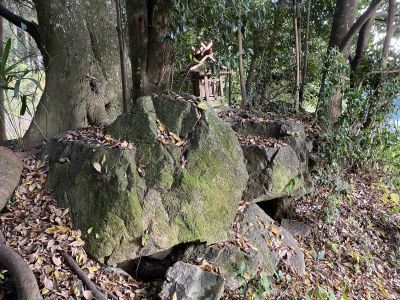


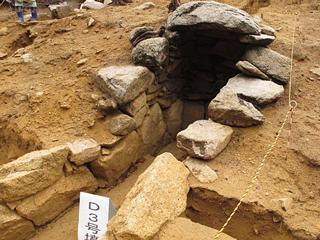

Sean bienvenidos, japonsistasarqueológicos, a una nueva entrega arqueológica, en esta ocasión os voy a hablar del túmulo Shofuku-ji una vez dicho esto, pónganse cómodos que empezamos. - ¿Dónde se localiza el túmulo Shofuku-ji? Se localiza en la ciudad de Kawanishi, en la prefectura de Hyōgo, localizado a su vez en la región de Kansai. La cámara funeraria se descubrió en la era Meiji. En 1934, el Dr. Sueharu Umehara de la Universidad de Kyoto realizó un estudio de campo y en la década de 1970, se realizó un estudio llevado a cabo por la Junta de Educación de la ciudad de Kawanishi que descubrió un ataúd de madera en la que se enterraron: puntas de flecha de hierro, espadas de hierro. - Data del siglo V y el siglo V y corresponde al periodo Kofun, con una longitud total de 40 m y fue construido a principios del siglo VI. Se descubrió un haniwa, que fue desenterrado durante la excavación, y se hizo de una manera muy similar al haniwa en la región de Owari que corresponde a la actual prefectura occidental de Aichi. - Espero que os haya gustado y nos vemos en próximas publicaciones, que pasen una buena semana. 日本の考古学者の皆さん、ようこそ!今回は、正福寺古墳についてお話します!では、早速始めましょう。 - 正福寺塚はどこにあるのですか?関西地方に位置する兵庫県川西市にあります。古墳が発見されたのは、明治時代です。1934年に京都大学の梅原末治博士が現地調査を行い、1970年代には川西市教育委員会の調査で木棺が発見され、その中に鉄鏃、鉄剣、鉄刀が埋められていました。 - 5~5世紀の古墳時代に相当し、全長40m、6世紀初頭に造られたものである。発掘調査で出土した埴輪は、現在の愛知県西部の尾張地方にある埴輪と酷似した作りのものが発見されています。
Welcome, Japanese archaeologists, to a new archaeological instalment, this time I am going to talk to you about the Shofuku-ji tumulus, having said that, make yourselves comfortable and let's get started. - Where is the Shofuku-ji mound located? It is located in the city of Kawanishi, Hyōgo Prefecture, located in the Kansai region. The burial chamber was discovered in the Meiji era. In 1934, Dr. Sueharu Umehara of Kyoto University conducted a field survey and in the 1970s, a survey conducted by the Kawanishi City Board of Education uncovered a wooden coffin in which were buried: iron arrowheads, iron swords, and iron swords. - It dates from the 5th-5th century and corresponds to the Kofun period, with a total length of 40 m and was built in the early 6th century. A haniwa, which was unearthed during excavation, was discovered and made in a very similar manner to the haniwa in the Owari region of what is now western Aichi Prefecture. - I hope you liked it and see you in future posts, have a nice week.




Sean bienvenidos japonistasarqueologicos a una nueva entrega del país del sol naciente en la que os explicaré que es el tsuyu, una vez dicho esto pónganse cómodos que empezamos. - ¿Qué es el tsuyu? ¿En qué consiste? El tsuyu, en hiragana つゆ y en kanji corresponde a 梅雨. Esto corresponde a los meses de verano en Japón: Mayo a julio seguramente todos habréis visto la película de Tenki no ko, del director Makoto shinkai, en el que se puede apreciar muy bien este fenómeno por poner un ejemplo. En estos dos meses caen grandes trombas de agua a raudales que para algunos le resultará placentero y otros una tortura¿Qué es para vosotros?, ¿os gustan los periodos de lluvia? - Espero que os haya gustado y nos vemos en próximas publicaciones que pasen una linda semana. - 日本の考古学者諸君、ようこそ、日出ずる国の新連載へ。ツユとは何かを説明しよう。 - ツユとは何か?つゆとは、ひらがなでは「つゆ」、漢字では「梅雨」にあたる。皆さんは新海誠監督の映画『天 気の子』をご覧になったことがあるだろう。この2ヶ月間、滔々と降り注ぐ大雨は、ある人にとっては喜びであり、ある人にとっては拷問である。 あなたは雨の時期が好きですか? - それでは、また次の記事でお会いしましょう。 - Welcome, Japanese archaeologists, to a new installment of the land of the rising sun in which I will explain to you what the tsuyu is, having said that, make yourselves comfortable and let's get started. - What is tsuyu and what does it consist of? Tsuyu, in hiragana つゆ and in kanji it would correspond to 梅雨. This corresponds to the summer months in Japan: May to July, you have probably all seen the film Tenki no ko, by director Makoto Shinkai, in which this phenomenon can be seen very well, to give an example. In these two months, huge downpours of water fall in torrents, which for some people will be a pleasure and for others a torture. What is it like for you, do you like periods of rain? - I hope you liked it and see you in the next posts have a nice week.
El origen de un país y su prehistoria, un paseo por la historia del país del sol naciente. /国の成り立ちと先史、日出ずる国の歴史を歩く。/The origin of a country and its prehistory, a walk through the history of the country of the rising sun.
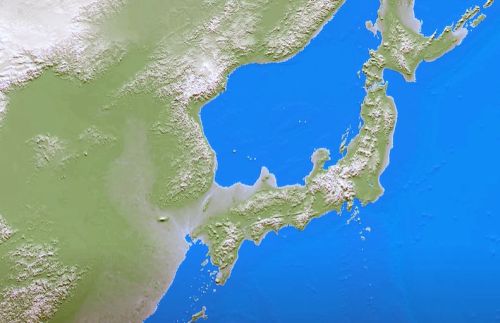

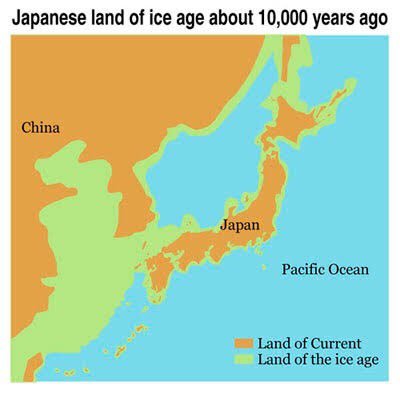

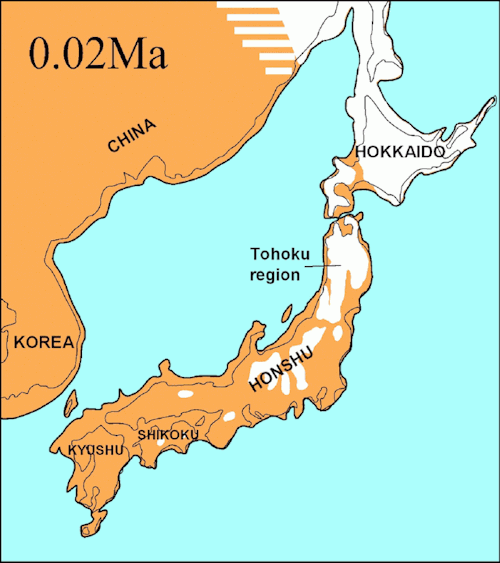

Sean bienvenidos, japonistasarqueológicos, a una nueva entrega de arqueología nipona e historia nipona, una vez dicho esto pónganse cómodos qué empezamos.
-
En los capítulos 1,2,3:Hablamos de: ¿Cuándo llegaron por primera vez los homínidos a Japón? ¿De qué vivían? Hablamos un poco de su geografía, de las cuatro eras glaciales, también se mencionó el holoceno. Empezamos a hablar del pleistoceno, y de cuando empezó la prehistoria de hace 2,5 (esta fecha está desfasada actualmente ronda 4 millones, por los hallazgos de industria lítica) a 7 millones de años. Comentamos algunos homínidos: Homo neanderthalensis, Homo heidelbergensis, homo ergaster entre otros homínidos, comentamos como África es la cuna de la humanidad, y su diversidad de dispersiones migratorias. También se comentó la llegada los homínidos a Okinawa hace 30.000-40.000 años y los Ainus como posibles primeros pobladores. Seguimos hablando del pleistoceno, estuvimos explicando un poco sobre el pleistoceno, se mencionó un poco la formación del archipiélago, mencioné mi posible teoría y al final terminamos con ¿Cómo se llaman las placas tectónicas que forman el archipiélago?
-
Espero que os guste y nos vemos en próximas publicaciones, que pasen una buena semana.
-
日本の考古学者諸君、ようこそ、日本考古学と日本史の新連載へ!さあ、くつろいで、始めよう。
第1章、第2章、第3章では、「ヒト科の動物はいつ日本にやってきたのか?地理、4つの氷河期、完新世についても少し触れました。更新世について話し始め、先史時代が始まった250万年前(この年代は、石器産業の発見により、現在では約400万年古くなっている)から700万年前について話した。ホモ・ネアンデルターレンシス、ホモ・ハイデルベルゲンシス、ホモ・エルガスターなどのホミノイドについて解説し、アフリカが人類発祥の地であること、その移動分散の多様性について述べた。また、3万~4万年前の沖縄へのヒト科動物の到着と、最初の入植者である可能性のあるアイヌ人についても議論した。私たちは更新世について話を続け、列島の形成について少し説明し、私が可能性のある説を述べ、最後にこう締めくくった。 列島を形成しているプレートの名前は?
それではまた、良い一週間を。
-
Welcome, Japanese archaeologists, to a new instalment of Japanese archaeology and Japanese history, so make yourselves comfortable and let's get started.
In chapters 1,2,3:We talk about: When did hominids first arrive in Japan? What did they live on? We talked a little bit about their geography, the four ice ages, the Holocene was also mentioned. We started talking about the Pleistocene, and when prehistory began from 2.5 (this date is now out of date by about 4 million years ago, due to the findings of lithic industry) to 7 million years ago. We commented on some hominids: Homo neanderthalensis, Homo heidelbergensis, homo ergaster among other hominids, we commented on how Africa is the cradle of humanity, and its diversity of migratory dispersions. We also discussed the arrival of hominids in Okinawa 30,000-40,000 years ago and the Ainus as possible first settlers. We continued talking about the Pleistocene, we were explaining a bit about the Pleistocene, the formation of the archipelago was mentioned a bit, I mentioned my possible theory and at the end we finished with What are the names of the tectonic plates that form the archipelago?
I hope you like it and see you in future posts, have a nice week.
-
 enablesomething liked this · 1 month ago
enablesomething liked this · 1 month ago -
 lcc-ldv liked this · 1 month ago
lcc-ldv liked this · 1 month ago -
 charlie-mac-posts liked this · 1 month ago
charlie-mac-posts liked this · 1 month ago -
 rennane-renna liked this · 2 months ago
rennane-renna liked this · 2 months ago -
 dutchs-blog liked this · 3 months ago
dutchs-blog liked this · 3 months ago -
 ninomeira liked this · 3 months ago
ninomeira liked this · 3 months ago -
 aydin52 liked this · 3 months ago
aydin52 liked this · 3 months ago -
 stevetoppsculpture liked this · 3 months ago
stevetoppsculpture liked this · 3 months ago -
 jastervhett liked this · 3 months ago
jastervhett liked this · 3 months ago -
 ihsanperfectlysparklywolf liked this · 3 months ago
ihsanperfectlysparklywolf liked this · 3 months ago -
 emaadsidiki liked this · 3 months ago
emaadsidiki liked this · 3 months ago -
 naser1963 liked this · 3 months ago
naser1963 liked this · 3 months ago -
 alfiosama liked this · 3 months ago
alfiosama liked this · 3 months ago -
 ogzd51 liked this · 4 months ago
ogzd51 liked this · 4 months ago -
 yusuf-krk liked this · 4 months ago
yusuf-krk liked this · 4 months ago -
 rodolfo9999 liked this · 4 months ago
rodolfo9999 liked this · 4 months ago -
 angelayasmim liked this · 4 months ago
angelayasmim liked this · 4 months ago -
 bear-pattern-hamster liked this · 4 months ago
bear-pattern-hamster liked this · 4 months ago -
 chuprinin liked this · 4 months ago
chuprinin liked this · 4 months ago -
 vuonkhuya liked this · 4 months ago
vuonkhuya liked this · 4 months ago -
 suenosyfantasmas liked this · 4 months ago
suenosyfantasmas liked this · 4 months ago -
 buffetlicious liked this · 4 months ago
buffetlicious liked this · 4 months ago -
 ted-blogs-blog liked this · 4 months ago
ted-blogs-blog liked this · 4 months ago -
 vivencias-del-alma liked this · 4 months ago
vivencias-del-alma liked this · 4 months ago -
 u-nobu liked this · 4 months ago
u-nobu liked this · 4 months ago -
 hcr-den liked this · 4 months ago
hcr-den liked this · 4 months ago -
 perfectlyscentedturtle-7 liked this · 4 months ago
perfectlyscentedturtle-7 liked this · 4 months ago -
 takanaminato liked this · 4 months ago
takanaminato liked this · 4 months ago -
 el-zorro-chile liked this · 4 months ago
el-zorro-chile liked this · 4 months ago -
 vestaignis liked this · 4 months ago
vestaignis liked this · 4 months ago -
 nealmcclure liked this · 4 months ago
nealmcclure liked this · 4 months ago -
 zlukaszemprzezswiat liked this · 4 months ago
zlukaszemprzezswiat liked this · 4 months ago -
 autonomy1 liked this · 4 months ago
autonomy1 liked this · 4 months ago -
 gloriousfartcupcake liked this · 4 months ago
gloriousfartcupcake liked this · 4 months ago -
 2018full liked this · 4 months ago
2018full liked this · 4 months ago -
 afinidade082323 liked this · 4 months ago
afinidade082323 liked this · 4 months ago -
 jlmahmud liked this · 4 months ago
jlmahmud liked this · 4 months ago -
 junian5522 liked this · 4 months ago
junian5522 liked this · 4 months ago -
 adam-trademark liked this · 4 months ago
adam-trademark liked this · 4 months ago -
 waiting-eyez liked this · 4 months ago
waiting-eyez liked this · 4 months ago -
 elegantpersoncreation liked this · 4 months ago
elegantpersoncreation liked this · 4 months ago -
 misterio-m liked this · 4 months ago
misterio-m liked this · 4 months ago -
 tuncsblog liked this · 4 months ago
tuncsblog liked this · 4 months ago -
 babylon-iraq-baghdad liked this · 4 months ago
babylon-iraq-baghdad liked this · 4 months ago -
 dgfmaurizio liked this · 4 months ago
dgfmaurizio liked this · 4 months ago -
 guildfordwa liked this · 4 months ago
guildfordwa liked this · 4 months ago -
 fredomotophoto liked this · 4 months ago
fredomotophoto liked this · 4 months ago -
 hiromusicarts-blog liked this · 4 months ago
hiromusicarts-blog liked this · 4 months ago -
 arif-a liked this · 4 months ago
arif-a liked this · 4 months ago

238 posts







